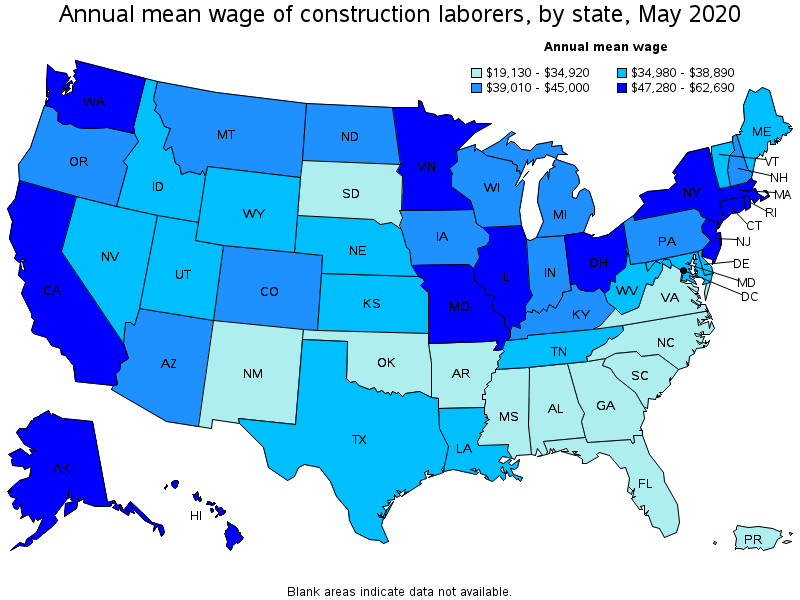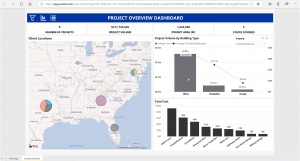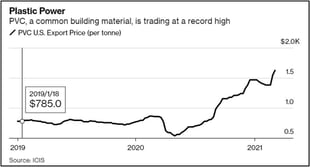The Best Way to Determine Labor Costs
Did you know that, across all industries, labor costs is one of the most expensive aspects of doing business? In some industries, labor costs can eat as much as 70% of a company’s budget. And in the construction industry specifically, labor costs are typically between the 20-40% range.
 Image courtesy of the U.S. Bureau of Labor Statistics
Image courtesy of the U.S. Bureau of Labor StatisticsThis is a massive percentage of a contractor’s budget, and when you consider the definition of labor costs, those numbers become even more significant. Labor costs are defined as the total cost of all labor used in a business. Heavy emphasis on “total cost” and “all labor”—these are crucial descriptors because labor costs don’t just refer to wages paid. They also include items like:
- Paid time off
- Recruiting and training expenses
- Payroll taxes
- Payroll fraud
- Equipment (like company phones or vehicles)
- Worker’s compensation, and similar forms of insurance
As a result, labor costs can be further narrowed down into two sections: direct labor and indirect labor.
Direct Labor
Direct labor cost is just as it sounds: it is the amount spent on labor that goes directly towards creating product.
Indirect Labor
Indirect labor costs, as the name implies, are not quite as obvious. They cover the cost of any labor that is used to support the execution of direct labor, as well as any money spent towards making direct labor more efficient.
Calculating labor costs is extremely difficult for two major reasons.
- The first is that these costs are not static; they are variable, rocketing up when a contractor increases output and plummeting back down when that output slows down. As a result, these costs need to occur in a mostly predictable cycle so that a company can plan accordingly.
- Secondly, most general contractors operate on razor-thin profit margins in ranges as low as 2-4%, according to BuildForce. Contractors frequently cannot afford to have even small mistakes in their calculations, so it’s extremely critical that projected labor costs are as accurate as possible.
Stephen Scott of Fluor states, “Too often contractors never perform, or perform it way too early in the bid cycle, a labor study of the area that they will be performing in to see what is available. Too often the owner or the contractor makes a commitment to execute the project using open shop or union labor. That may not be the case. Here lately, I have had to use both or a mix depending on what is available. Also, if local craft and staff is not available then you have to factor in living allowance cost in your bid. The other labor factor is the skill level. You may have to import craft that has the skill level to meet the owner's needs, as well as being able to perform the work to meet your estimate and schedule.”
This naturally begs the question, though—what is the best way for general contractors to accurately determine labor costs? Well, there are a few different options, and not all of them are created equal.
1. Punt it to the subs on your master bid list
One of the most common ways that contractors arrive at a number for labor costs is by sending their plans to the subcontractors on their master bid list. Alternatively, they might also get a material list together and send it out to their suppliers in order to get a quote.
But the problem with this method, though, is that it relies on a third party being able to get numbers back to you quickly. And let’s be honest, with the workload that most subcontractors are handling on a daily basis—including over the weekends—they often don’t have time to get that data back to you, much less drill down to make sure they’re as accurate as possible. So it’s safe to say that while this is a better method than writing out estimates by hand, there are still too many potential gaps in the process for it to be the best way to determine costs.
2. Unit pricing
Unit pricing is simply the price for an individual item or measurement, and it can include items such as square footage, materials like brick or lumber, and of course, labor activities like painting or roofing. Unit pricing has several advantages over sending plans to your subs. First, it makes price comparison much easier and quicker. Second, unit pricing lets you calculate your direct labor costs first, and then add in indirect labor costs, which allows you to see your actual cost. Finally, being able to see your actual cost means that you’ll be able to be way more competitive with your numbers and thus improve your negotiations.
It’s easy to see that determining labor costs via unit pricing is already an immensely superior method compared to handing off plans to subs. But still—is it the best way?
3. Combine unit pricing and takeoff in a unified estimating platform like DESTINI Estimator
If you’re performing your takeoff in one platform and then using the data from it to calculate labor costs in another, we would argue no, it’s not the best method. We believe that the best way to generate the most accurate numbers is to perform all of these activities—takeoffs, unit pricing, and price comparisons—in a single centralized construction estimating software, such as our flagship product DESTINI Estimator.
In this day and age, as project owners demand more in less time, you can’t afford to be even a few hundred dollars off the mark. If you’d like to learn more about how DESTINI Estimator can improve the accuracy of your labor costs, hit the button below to schedule a demo.















